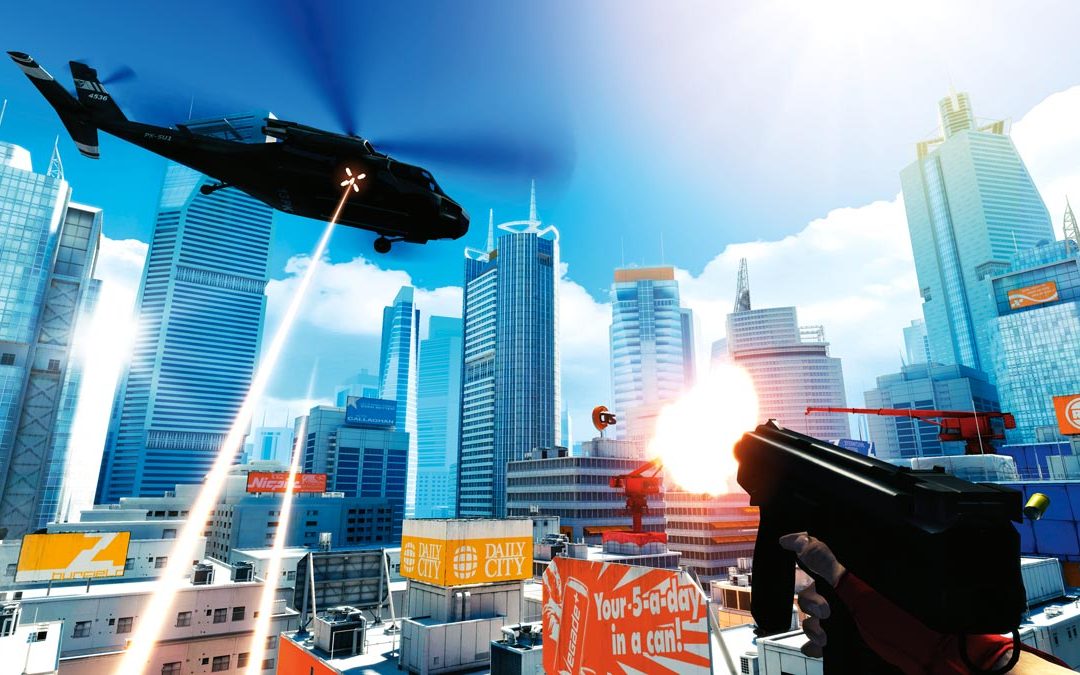When the virtual became reality
Quite a few business cards changed owner during the short, but intense, breakfast seminar ”Gaming & Architecture” at the Nordic Light Hotel in Stockholm.
The audience – remarkably young and with a majority of architects – immediately got the message when moderator Åsa Roos from Swedish game developer Avalanche Studios introduced by asking the rhetorical question: ”When will the architects discover the possibilities of the gaming business”?
And if there were any doubts about the possibilities given by the game engines of modern computer games, they were properly eliminated when Joakim Svärling from DICE let the audience get a glance at the coming Parkour/FPS game Mirror’s Edge (release date 13 November for Playstation 3 and Xbox 360. A PC-version will be released later this winter).
Make the projects come alive with gaming techniques
Joakim Svärling the presented his hobby project – a virtual interpretation of the life on the 17th century warship Vasa, to show the audience the power of making architecture come alive by using modern, cutting-edge graphic technology. The gaming industry already has the technical muscles to simulate, for example, sounds in a certain environment or how people move in different buildings – something that could be very useful for an architect in her daily work.
Svärling also meant that the gaming industry, which is constantly seeking more and more realistic game experiences, need the architects’ competence about materials, infra-structure and usability.
”We already work with tomorrow’s games, where the goal is to cross the boundaries – is it reality or a game? Well, that could be hard to decide when you feel the smell of food or the heat from a fireplace. In practice, we have solved this – you can’t even imagine everything we are able to do today. The real challenge is to know exactly how buildings collapse in an explosion. Here we need your help”, concluded Svärling with a blink to the architects in the audience.
The virtual world develops the concept of architecture
In the following panel debate, where Joakim Svärling participated together with Tor Lindstrand (architect and Associate Professor at the School of Architecture, Royal Institute of Technology) och Britta Holmblad (architect at White), the discussion continued about the possibilities of a cross-fertilization between the two industries.
Tor and Britta pointed out their experiences of Second Life, where – in spite of the unlimited possibilities – the houses were built traditionally with roofs (it rarely rains in Second Life) and with stairs (despite that you can fly). Their conclusion was that the architecture would need to be challenged by the freedom of the gaming world – to develop the view and ideas of the profession and the design in reality.
Judging from the reactions and discussions after the seminar, we’re definitely heading towards a very exciting future – in the virtual world as well as in the real world.
Programme
Nordic Light Hotel, Stockholm, 20 October 2008
08.00
Breakfast
08.30 – 09.30
Seminar Gaming & Architecture
Speaker:
Joakim Svärling, DICE
Moderator:
Åsa Roos, Avalanche Studios
Panel debate:
Speaker as per above, plus:
Britta Holmblad, White Arkitekter
Tor Lindstrand, School of Architecture, Royal Institute of Technology.
Anders Rydell, Forum AID
Speakers
Joakim Svärling
DICE
DICE (EA Digital Illusions Creative Entertainment) is one of the world’s foremost game studios, and an award-winning developer of interactive entertainment based in Stockholm, Sweden. The company has 270 employees and develops games on most platforms. DICE is the maker of the bestselling Battlefield franchise. At the well-renowned game studio DICE, extreme technical challenges and cutting-edge visuals are part of the daily work.
Joakim Svärling has been involved in the evolution of game development as he joined the studio in 2000. Throughout his career he has ambitiously worked his way through different graphical roles, from an object, world, effects and lighting designer to Art Director for several different projects (Rallisport series, Battlefield series). Today he drives the overall graphic direction and guidelines for one of the company’s major projects.
Britta Holmblad
White Arkitekter
Britta is an architect at White in Stockholm. In her report “Learning from Second Life” (a parallel to “Learning from Las Vegas” by Venturi) she looks into the architect’s role in virtual worlds. The report also brings up issues like symbolism and aestethics in online worlds.
Tor Lindstrand
School of Architecture, Royal Institute of Technology
Tor Lindstrand (Stockholm) is an architect active in his own office Larsson, Lindstrand and Palme and founder of International Festival together with choreographer Mårten Spångberg. Tor Lindstrand is an Associate Professor at the School of Architecture, Royal Institute of Technology. He has been working on interdisciplinary and collaborative projects between architecture, visual art and performance in numerous cultural contexts. He’s an editor at Merge Magazine, a cultural quarterly on sound, thought, image.
Anders Rydell
Forum AID
Anders Rydell (Stockholm) is a writer at Forum AID, and editor specialized in future and innovation issues at Bon Magazine. He’s also freelancing for, among others, Dagens Nyheter, Fokus and Din Teknik. In October he will publish his first book “Byt namn! – och andra sätt att lyckas som journalist” (“Change your name! – and other ways to succeed as a journalist”), which he wrote together with Klas Ericsson. Anders Rydell covers what happens in the meeting between culture and science – how new technical innovations and science changes the cultural landscape in regards to lifestyles, politics and art. Anders Rydell also works as consultant, advisor, project manager and lecturer.
Åsa Roos
Avalanche Studios
Åsa Roos is a game designer with an industrial designer background. She’s been working in the games business since 2000, and has a background as a level designer, game designer and project manager in different companies, among others Unique Development Studios, Sulake Oy and Terraplay. Currently she’s working at Avalanche Studios on the project Just Cause 2. She also teaches at futuregames.
Avalanche Studios, initiated in 2003, is focussing on developing original game IPs set in large-scale environments, using their proprietary game engine technology. Avalanche Studios is widely known within the games industry for its cutting-edge terrain and landscape technology. The company recently received funding from the Swedish Governmental Agency for Innovation Systems for a research project exploring advanced algorithms for procedural generation of urban environments and architecture.





